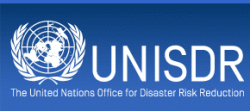Event Summary
Organization: United Nations Office for Disaster Risk Reduction (UNISDR) & European Commission Joint Research Centre (JRC)
Session Leads
- Chadia Wannous, UNISDR
- Virginia Murray, UNISDR Scientific and Technical Advisory Groups
- Thomas Kemper, Joint Research Centre
Speakers
- Virginia Murray, UNISDR STAG - The Sendai Framework for Disaster Risk Reduction 2015-2030, the UNISDR Science and Technology Conference on the implementation of the Sendai Framework, Partnership and Road Map (moderator)
- H.E. Musa Ecweru, Minister of State for Relief, Disaster Preparedness and Refugees of The Republic of Uganda, Head of Uganda Delegation
- Daniele Ehrlich, JRC – Regional Speaker - The contribution of Disaster Risk Management Knowledge Centre (DRMKC), high resolution settlement information and other examples describing a regional role for science and technology
- Alastair Norris (and Robert Muir-Wood), RMS– International level speaker - Modelling and Data – The Challenges of Measuring Progress in Disaster Risk Reduction
Description
In 2015 the UN member states adopted the Sendai Framework for Disaster Risk Reduction 2015-2030, the Sustainable Development Goals and the Paris Climate Change Agreement.
Understanding disaster risk is the first of four priorities for action in the Sendai Framework that was adopted by 187 countries in March 2015 and endorsed by the UN General Assembly in June 2015.
This session aimed at responding to the challenges and opportunities of the implementation of the Sendai Framework and share the outcome of the UNISDR Science and Technology Conference on its implementation with the launch the UNISDR Science and Technology Partnership and the Science and Technology Road Map to 2030.
The UNISDR Science and Technology partnership focused on the need for local and national, regional and international level collaboration and the four priorities identified in the Framework:
- Priority 1: Understanding disaster risk.
- Priority 2: Strengthening disaster risk governance to manage disaster risk.
- Priority 3: Investing in disaster risk reduction for resilience.
- Priority 4: Enhancing disaster preparedness for effective response and to “Build Back Better” in recovery, rehabilitation and reconstruction.
Ignite
By Virginia Murray, UNISDR
 |
 |
